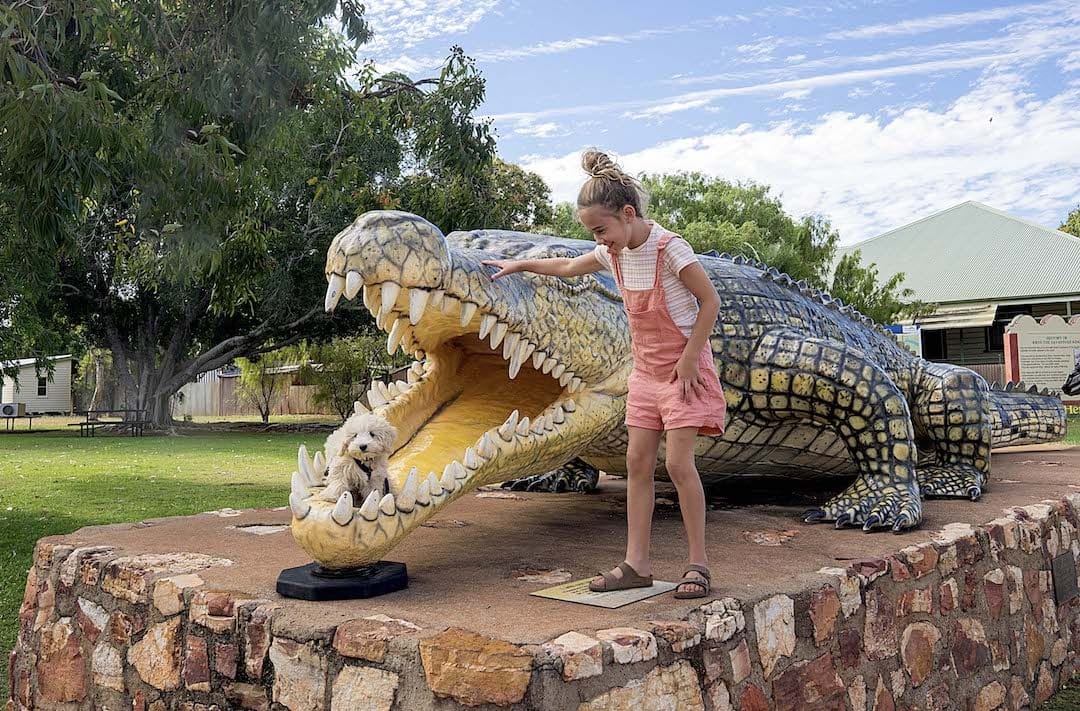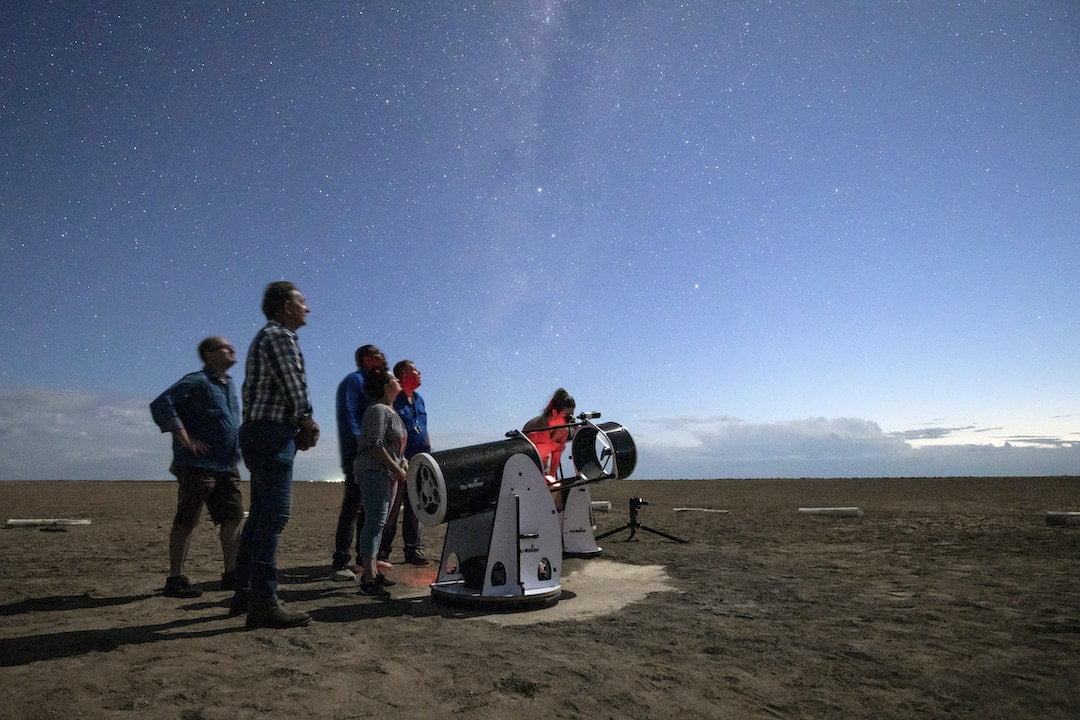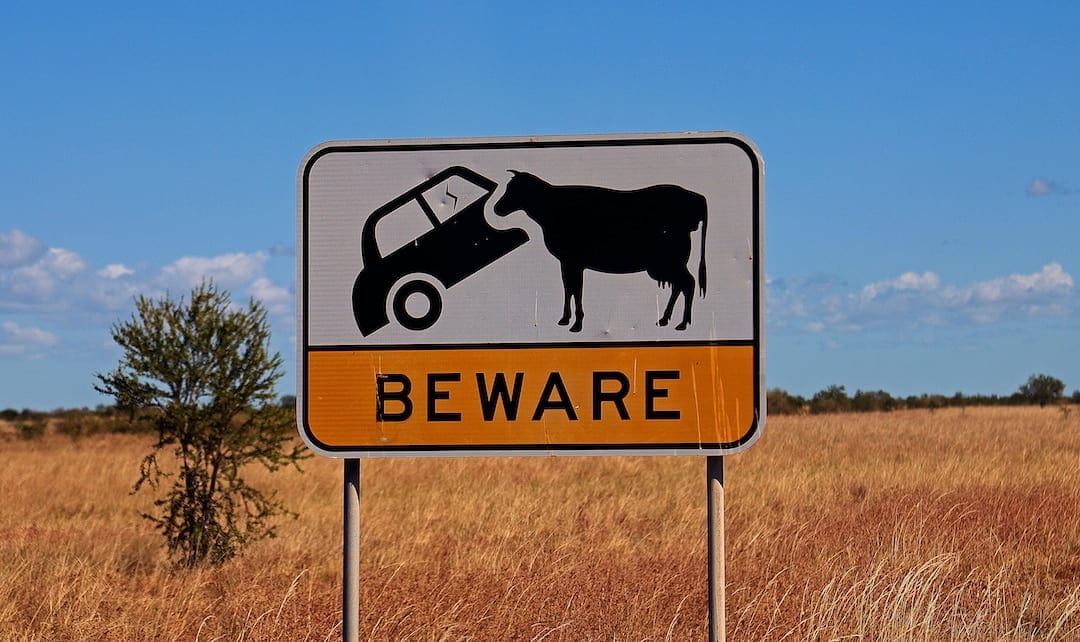Carpentaria Country and the three towns of Normanton, Karumba and Burketown
You can tell when dry season has arrived in the Gulf of Carpentaria. Come early April a motorcade of grey (if not tangerine to polka-dot) nomads starts rolling into town. Sporting thousand-yard grins and watches set to wine o’clock, they’re storming Barradise with fishing rods and a tinny in tow.
Queensland’s overlooked “west coast” is raw and wondrous, a saltwater outback whose Arafura-blue waters, even if a bit snap-happy with crocs, have sunsets that give Bali a run for its money. A trio of Gulf towns, Normanton, Karumba and Burketown form what I call the Carpentaria Triangle, a mysterious zone where Big Smoke obsessions like woke-ism, celebrity culture and pompous ships of state sink without trace.
Normanton
The painless way to arrive here is, of course, on the wing. But the unique way is aboard “the train that runs from nowhere to nowhere”, the 140-year old Gulflander service. It rattles in from Croydon, officially 94 miles — not 150 kilometres — to the west. The “Tin Hare’s” route across the savannah plains is replete with gold rush ruins, mail drops, brolgas and abandoned whistle-stops, all of it animated the train driver’s vivid narration.

You step-down from the old red rattler beneath the huge hooped iron roof of Normanton’s heritage-listed 1889 station. Once known as the “Capital of Carpentaria”, the town still has streets wide enough for a bullock dray to do wheelies, along with elegant 19th century architectural oddities like the massive Burns Philp trading depot.

But time hasn’t stood still here. The town’s famous Purple Pub is now rivalled by the Lime Green Butcher and the Hot Pink Bakery. It’s lunchtime when I wander into the latter, noting the display of ready-to-go rolls.
“A salad roll, please.”
“Certainly, mate. What’ll it be, pork or beef?”
“Just salad, thanks.”
“Sorry, all our salad rolls are made with meat.”
No country for old veggos, this. But definitely one for great beef salad rolls.
On the same main street is the replica of a crocodile that’s been dead since 1957 but can still scare the living daylights out of you. “Kris the Croc” had jaws that might wolf down a bullock like a salad sanger. At 8.63-metres, this two-tonne saltie, the largest crocodile ever shot, met its match in the diminutive local hunter Krystina Pawlowska.

Normanton, all balmy dry season days, cold beer and well shaded campgrounds is, for many visitors, a thousand miles from care. It’s also 3200km from Melbourne, the distance that the ill fated 1861 Burke and Wills expedition tramped across the continent until they reached a spot just short of the Gulf.
You can turn off the Savannah Way 30km outside Normanton and find the poignant Camp 119, the northernmost point of their trek. The gnarled coolabahs that shade this tranquil billabong were young when the explorers carved their initials in them before turning south to meet their fate.
Karumba
Karumba, at the mouth of the Norman River, is the only town among the Gulf trio that sits right on the coast. It might be an angler’s “barradise” but, predictably, there’s a local moan that the weather is “always either too wet or too dry”. In fact, the April-May temperature of around 27-degrees is just perfect.
The Gulf is indeed a place of extremes, weather-wise, creature-wise and in the past, behaviour-wise. An unlikely crew of bards, Californian rockers, the Red Hot Chilli Peppers — what were they even doing way out here? — nailed Karumba’s extremes in their song Animal Bar: “The cry of isolation/ the high of meditation/ for sweet precipitation.”
They name-ticked the legendary Animal Bar where, during last century’s prawn and barramundi booms, a drinking session could get so wildly animated that every moveable item, including ashtrays, was bolted down. Just one rule applied: all brawls to be settled by sunrise. Today I sit at the breezy, open-fronted pub. With not a fight in sight, all is calm at the Animal Bar and next door too at the very ironically named Suave Bar.
I board Ken Nottle’s Crab and Croc Tour for a spectacular exploration of Karumba’s Six-Mile Creek. We catch giant mud-crabs and drop in on a show-pony, four-metre crocodile called Hollywood who can’t stop posing for photos. White-blazed sea eagles and brahminy kites swoop and pinion above us. It’s a domain of jabirus and pelicans, mangroves and sandbars, and always of lurking “big lizards” — Ken’s name for saltwater crocodiles.

A Karumba tip: take a tour at the high-tech, science-rich Barramundi Discovery Centre to see how barramundi are bred and nurtured. Then don’t miss the café’s excellent barra-burgers.
Burketown
Robert O’Hara Burke didn’t reach the Gulf — the wet season swamps thwarted his desperate, last-ditch efforts — but later settlers honored the blowhard Melbourne Irishman with a new town on the Albert River. Unlike its namesake, Burketown survived and thrived. Today the tidy town of around 300 people is a notable success story for the Ganglidda-Garawa community that has steadily built tourism assets, financial independence and educational achievement.
You can fly into Burketown or drive the Savannah Way 230km from Karumba, a journey of wedge-tailed eagles, flash mobs of cattle and the Leichhardt Falls. Whatever way you arrive, there’s a well-appointed cabin waiting at the Indigenous-owned Savannah Lodge, an oasis of greenery and a good pool. I base myself there while joining-up with local specialists, Yagurli Tours for tag-along drive excursions to hot springs and pristine billabongs, plus a sunset river cruise and finally a night of desert stargazing.
Led by Aboriginal rangers Pat Cumsing and Lurick Sowden, we head out across a vast saltpan, northern Australia’s largest, that stretches beyond the town. As dusk fades to darkness the rangers set up a sophisticated, barrel-sized telescope and focus on the moon. With no light pollution, the high definition, craters-and-all image is stunning. Later, as the moon drops and the sky becomes a tsunami of stars, the men re-story the constellations with their people’s sky dreaming astronomy. Emus and night owls reclaim the heavens, Orions Belt loosens.

Travel to Carpentaria country, the painless way
If you feel inspired to travel to the Carpentaria triangle, tag us in your adventures @trulyaus on Instagram and Facebook. You can research more about outback Queensland with our story on Toowoomba.
Rex Airlines flies to Normanton and Burketown on their Gulf line from Cairns to Mount Isa and return.
See the map below for details on how to travel to any of the places mentioned above and book your flight here.

The Gulf line with Rex Airlines is highlighted in pink and travels through Carpentaria country via Mount Isa, Doomadgee, Burketown, Mornington Island (Gununa), Normanton and Cairns.






